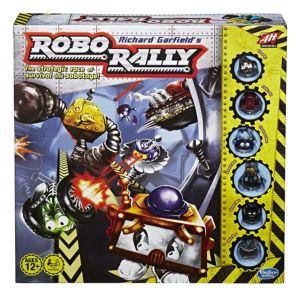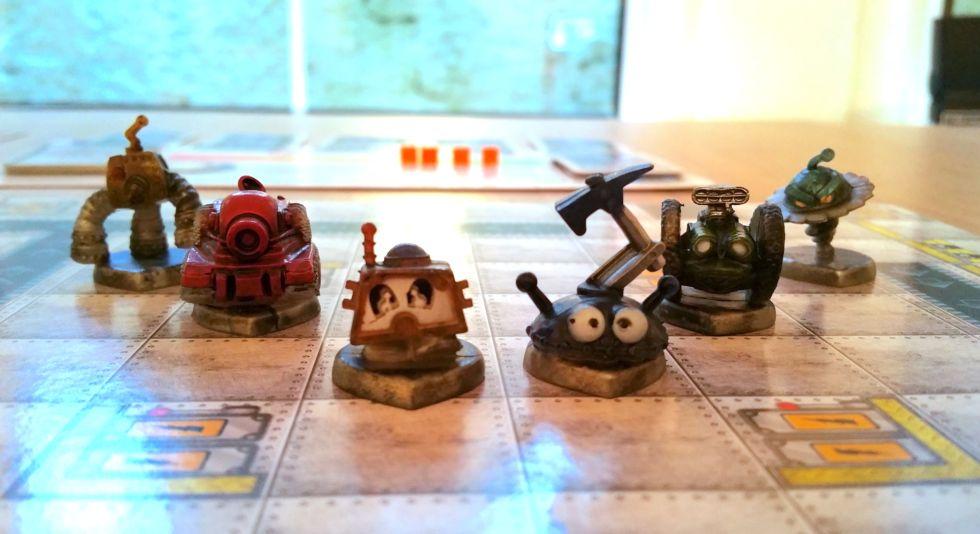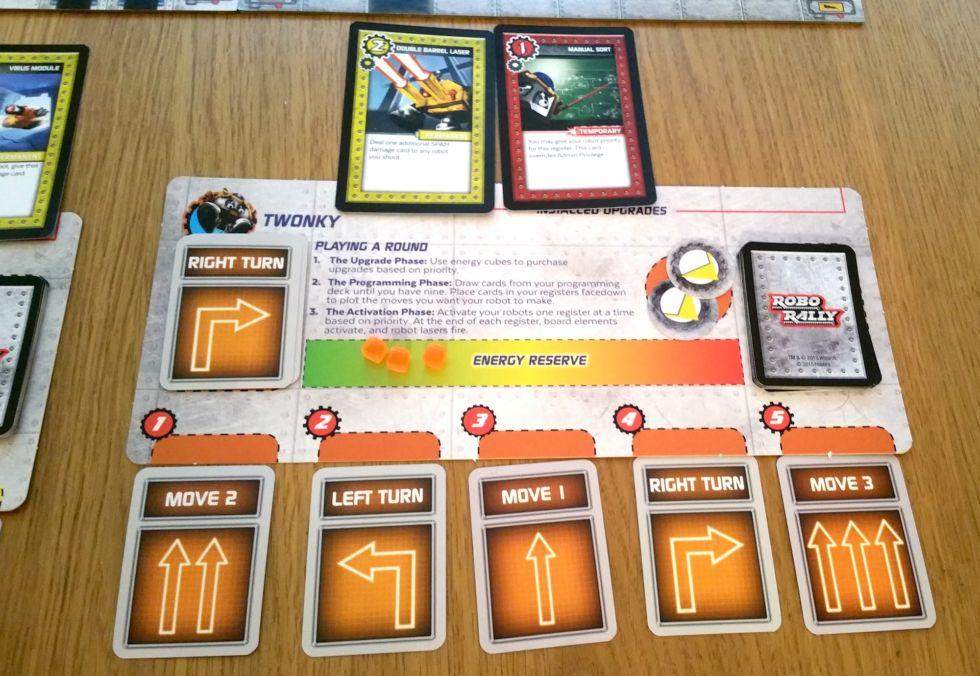“This is the worst game I’ve ever played in my life.”
My friend spat the words through gritted teeth with the kind of vehemence normally reserved for YouTube comment threads. I considered calling a halt to the game, packing it away, and finding something less infuriating to play instead. Then I looked around and saw the bright-eyed grins on the faces of everyone else around the table.

Robo Rally, it turns out, is a polarizing game because its main source of entertainment can be watching other players’ frustration. It’s also considered something of a classic. Designed by Richard Garfield of Magic: The Gathering fame and first published in 1994, Robo Rally has recently been re-released by Hasbro in an updated version. The game hands players control of industrial robots competing in a race around a factory packed with hazards.
My aggrieved friend had become intimate with all three of these dangers. His robot had been bashed, zapped, shunted, and otherwise abused from the very first turn, and he had finally reached his breaking point.
But Robo Rally isn’t just an arbitrary engine for dispensing pain. At its heart, the game is about careful planning and making the best use of available resources to steadily advance toward victory. Essentially, it’s about programming. You start the game armed with a personal deck of “order cards” which can command your robot to move forward or backwards or turn to the left or right. After drawing nine of these cards on each round and choosing five of them to play, you lay them down in order of execution. When everyone’s finished, you each take a turn resolving your actions one at a time and move your robot around the board in an effort to reach a series of checkpoints.
It sounds straightforward, but the game injects multiple elements of chaos to ensure that even the best-laid plans can go hideously wrong. In addition to the aforementioned obstacles, of course, it’s not uncommon to find yourself on the wrong end of several of them in the course of a single round. And your robot rivals can unceremoniously shove you around the board or zap you with lasers as they carve their own path toward the finish line.
Time is also an issue. The first player to finish programming his or her robot on each round gets to flip a 30-second sand timer. Any opponents who haven’t issued all of their commands by the time it runs out are forced to play cards at random from the top of their decks. The game makes them lose control of their droid and potentially creates a massive headache as they attempt to steer their way back into the race.

Robo Rally’s most anarchic feature, though, is its assortment of damage cards, which you acquire whenever you suffer dings and dents in the arena. These are added to your programming deck and have a variety of derailing effects, all of which make your robot more difficult to control. Picking up one or two is no big deal—they simply pollute your deck and give you fewer useful options to choose from during a round. But eventually you acquire enough that you have no choice but to play one or more as part of your sequence of commands, triggering their effects and forcing you to deal with the unpredictable consequences.
It’s not all bad news, though. For one thing, you can use the arena itself to your advantage; hopping on a conveyor belt can catapult you toward your next checkpoint. You can use your stash of energy cubes to purchase upgrade cards to get your robot new abilities (this will be familiar to anyone who’s played Garfield’s family-friendly monster battle game King of Tokyo). Recharging stations dotted around the board give you the chance to acquire extra energy, and different combinations of powers can prove useful as the game goes on.
Robo Rally is fun, challenging, and, yes, frustrating. That means your enjoyment of the game will probably depend on your ability to shrug off setbacks. And it’s easy to see why certain types of players take a strong and immediate dislike to it.
But, while some potential problems depend largely on players’ personalities, others are harder to ignore.
For one thing, Robo Rally’s physical design is problematic. It comes with six painted plastic miniature robots, and, while they aren’t spectacular, they’re cute and full of personality. The modular board segments, though, are another matter. The dull, repetitive expanse of metallic grey floor tiles is about as visually appealing as a game of Minesweeper. Then there are the player boards and punch-out tokens, which are printed on the flimsiest card stock I’ve ever seen in a game.

While Robo Rally was perhaps the earliest game to popularize the idea of “programming” actions, it has been outdone by subsequent releases which took the concept and developed it. Just as the card game Dominion introduced the concept of deck building and gave rise to a host of other games that put their own spins on the formula, Robo Rally has been overtaken, most notably by 2016’s Mechs vs. Minions. This League of Legends-themed game takes the idea of a programmed sequence of orders and adapts it for cooperative play, while adding an engaging storyline, greater variety in its scenarios, and an astounding level of presentation. (Ars’ own Sam Machovech recently reviewed Mechs vs. Minions and found it wanting; I enjoyed it much more.)
Comparing Robo Rally to Mechs vs. Minions might seem unfair. In the 20 years since Robo Rally was first released, board gaming has gone through extraordinary creative growth. The new version of Robo Rally does have some significant changes, most notably the removal of player elimination. But while there’s fun to be had in the game’s blend of considered planning and frantic, laser-induced panic, it often feels clunky by 21st-century standards. Robo Rally definitely shows its age, and, at this point, its strongest appeal is probably nostalgia.
